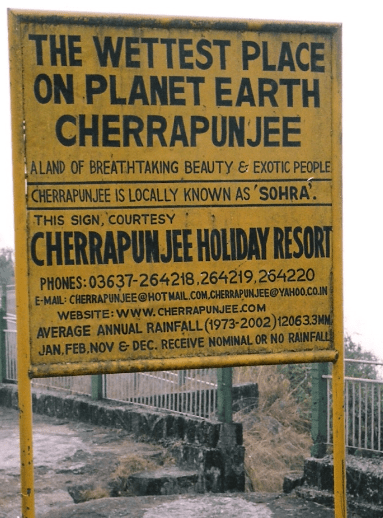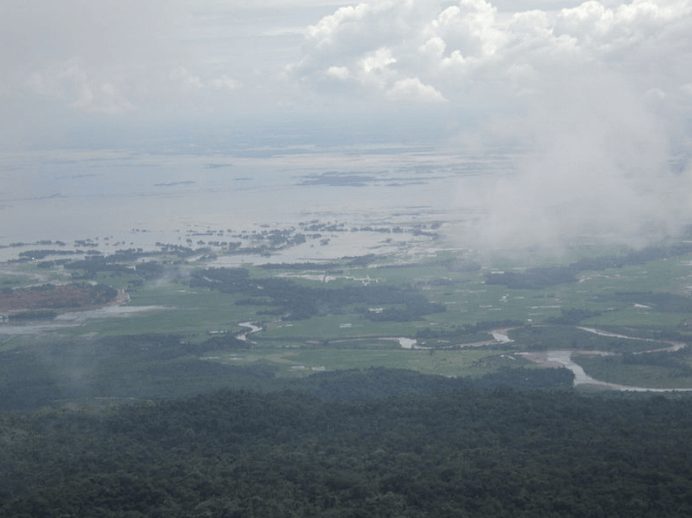The wettest place on Earth, Cherrapunji, is located in the East Khasi Hills in Meghalaya (Indian State). However, among those heavy showers and thick rainforest are several unknown and known natural wonders – some are discovered while others are still undiscovered.
Why Cherrapunji is the Wettest Place in India?
It is moderately complex to understand the reasons for heavy rainfall in this area. The monsoon clouds fly over relatively flat terrains- formed over the Bay of Bengal- until they reach Cherrapunji. However, they need to dump most of their moisture to make their way over the Khasi Hills’ steep slopes. And because of this, Cherrapunji receives frequent and heavy rainfall.
Moreover, there is a fluctuation in the average yearly rainfall of the region.
World Records Held by Cherrapunji
The wettest place on Earth, Cherrapunji, holds several world records. Although Cherrapunji holds the record for the highest recorded rainfall in history, it has not always claimed the no. 1 position. Mawsynram, a neighboring town, recorded a staggering rainfall of 26.000 millimeters in 1985, beating the Cherrapunji Rainfall record.
The Well-Known Living Root Bridges in Cherrapunji
Made from tangled old roots, these century-old root bridges are necessary for the survival of the locals. To make the taproots of the trees grow in the desired manner, the locals use numerous techniques. The roots are pulled, ties, and twisted to merge with the existing bridges. As a result, they form natural architectural structures over time, hence called Living Root Bridges.
For creating temporary structures, scaffolding is made using perishable material. They are to train young roots to develop appropriately.
Can Mahabaleshwar Become the Wettest Place on Earth?
As per a report by The Weather Channel, Mahabaleshwar received an average of 250 millimeters of rainfall daily over the eight-day. It puts Mahabaleshwar, a hill station in India’s Western Ghats, in the running position to be the wettest place on Earth. As per the Guinness Book of Records, the Mawsynram district in the Meghalayan city of Cherrapunji holds this title.
In the Guinness Book of world records, the record held in 1861 by Cherrapunji stands at 9,300 millimeters in July. Between 1st August 1860 and 31st July 1861, a twelve-month record for 26,461 millimeters of rainfall also belongs to Cherrapunji (source).
The People of Cherrapunji
The term used to refer to the indigenous people of Cherrapunji is Khasi. These people have thrived, lived in Cherrapunji for centuries despite the heavy rainfall condition. The Khasi, later battling heavy rainfall for centuries, have developed innovative ways to turn the devastating situation to their advantage.
One of such techniques is growing the Living Root Bridges. They take ten to fifteen years to develop and last for centuries.
Best Time to Visit Cherrapunji
If you are thinking of visiting this wondrous place, then knowing the best time is crucial. It rains in Cherrapunji almost every day. However, some months are not appropriate for traveling since that time can be quite inconvenient for you.
- November to Feburary: If you can bear the temperature around 5°C with occasional rainfall, November to February is an excellent time to visit Cherrapunji.
- June to September: Low temperatures coupled with heavy rainfalls makes Monsoon (June-September) the most unfavorable time to visit this place.
- March to May: This is the best time to visit Cherrapunji because the rainfall rate is relatively low between March and May. But remember to leave before May as it is the wettest month of the year.
The sights are breathtakingly beautiful, and the landscape is picturesque this time of the year.
Conclusion
The heavy rainfall makes Cherrapunji the wettest place in the world. There comes the month when the rainfall rate falls, but most of the months, you will find the Cherrapunji region wet.


